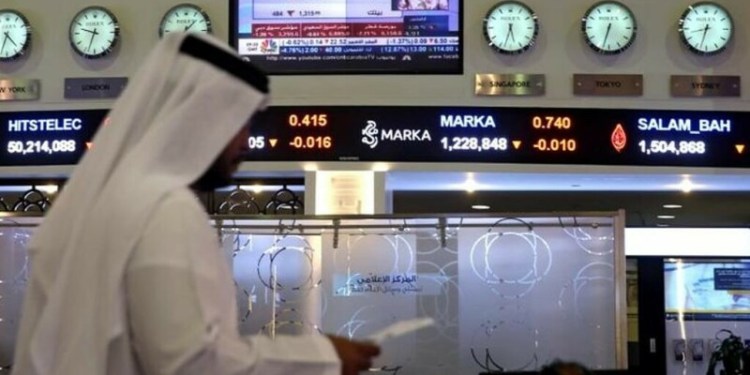By Gavin Jones
ROME (Reuters) – Signs of economic weakening in Italy and the wider euro zone are complicating the new, anti-establishment coalition’s plans for deep tax cuts and higher welfare spending.
When the euro zone slows down, chronically sluggish Italy normally slows more sharply, with a knock-on effect on its fragile public accounts.
The euro zone’s third largest economy has grown less than any of its partners since the start of monetary union in 1999, and high unemployment and rising poverty helped propel the 5-Star Movement and the right-wing League into power.
However, even Italy had staged a modest recovery since a steep, double dip recession that cut the size of its economy by a tenth, ended in 2014. Last year’s growth rate of 1.5 percent was the strongest since 2010.
The former center-left government had forecast the same rate for this year, but after a raft of soft data the target looks over-optimistic. It seems the 5-Star/League government has taken office just as a downturn begins.
Industrial output fell 1.2 percent in April from the month before, statistics bureau ISTAT reported on Monday, the third drop in four months, while annual output growth was the weakest for a year.
For graphic on major European economies click http://tmsnrt.rs/2bGaKmZ
For graphic on Italy economy click http://tmsnrt.rs/2bxVe8n
Business confidence data and surveys of purchasing managers in manufacturing and services firms have weakened steadily this year, as has ISTAT’s composite leading indicator for the economy as a whole.
Gross domestic product (GDP) rose 0.3 percent in the first quarter from the previous three months. The 1.4 percent annual growth rate was the slowest since the first quarter of 2017.
“It now looks like growth in the second quarter may be weaker than the first, said Stefania Tomasini of the Bologna-based Prometeia economic think-tank.
LOWER FORECASTS
Barclays (LON:) Capital on Monday forecast second quarter growth of 0.2 percent and full-year expansion of just 1.2 percent, well below the official 1.5 percent goal. Retailers’ lobby Confcommercio also forecasts full-year growth of 1.2 percent.
Many economists fear the coalition’s spending plans will drive up Italy’s public debt, already the euro zone’s second highest at around 132 percent of GDP.
Economy Minister Giovanni Tria, a technocrat with no party affiliation, calmed market jitters with a newspaper interview on Sunday where he strongly committed to debt reduction. Some observers question how this can square with the ruling parties’ policy plans.
These include cutting the main corporate tax rate to 15 percent from 24 percent; replacing the five current income tax brackets between 23 percent to 43 percent with just two rates of 15 percent and 20 percent, reducing the retirement age and guaranteeing income of up to 780 euros per month for the poor.
The parties say the tax cuts, alongside a boost to public investment, can kick-start growth and reduce the debt as a proportion of GDP. They argue the initial fall in revenues from the tax cuts will soon be offset by a fall in tax evasion and higher income from indirect taxes due to a more buoyant economy.
“The way to lower the debt is by boosting growth and the way to boost growth is by cutting taxes,” said Armando Siri, a senator from the League and economics advisor to its leader Matteo Salvini, adding that the government would also cut unnecessary spending on bureaucracy.
In Germany, Italy’s main trading partner, industrial output, orders and exports have fallen in three of the first four months of the year, French industrial output unexpectedly fell for a second month running in April and in the same month British manufacturing output posted its biggest fall since 2012.
“If Germany slows as it seems to be doing, that is a big problem for Italy,” said Roberto Perotti, economics professor at Milan’s Bocconi University.
SILVER LINING?
Italy’s radical new leaders may see a silver lining to the gathering clouds.
A broad slowdown in Europe could make its governments more willing to accept the changes to EU budget rules that Rome is clamoring for, allowing more spending on public investments.
“The fundamental point is that we don’t like the rules as they stand, and we have put together a government team to go and negotiate changes,” said 5-Star leader and Deputy Prime Minister Luigi Di Maio.
But given Italy’s usual underperformance in the euro zone, the risk is that its growth could peter out altogether.
A survey by multinational employment agency Manpower on Tuesday showed among 44 countries surveyed Italy was the only one whose firms planned to reduce headcount in the third quarter.
“This is a delicate moment, and increasing the budget deficit and the debt now will bring us straight back to a debt crisis like we saw in 2011 or even worse,” Perotti said.
Italian benchmark bond yields, which had risen sharply on concerns about the government’s fiscal plans, posted their biggest one-day drop for six years on Monday following Tria’s reassurances.
However, they remain way above their levels before the March 4 election, and volatility is extremely high. Higher yields mean higher debt servicing costs, reducing the new government’s room for tax cuts and spending even more.
Moreover, unfavorable global developments means selling pressure on Italian assets is likely to persist regardless of Rome’s domestic politics, analysts say.
Fears that U.S. tariffs on steel and aluminum will lead to a global trade war and the expectation the European Central Bank will end its bond-buying program this year are leading investors to prefer safe-haven assets such as German Bunds.
Source: Investing.com


























